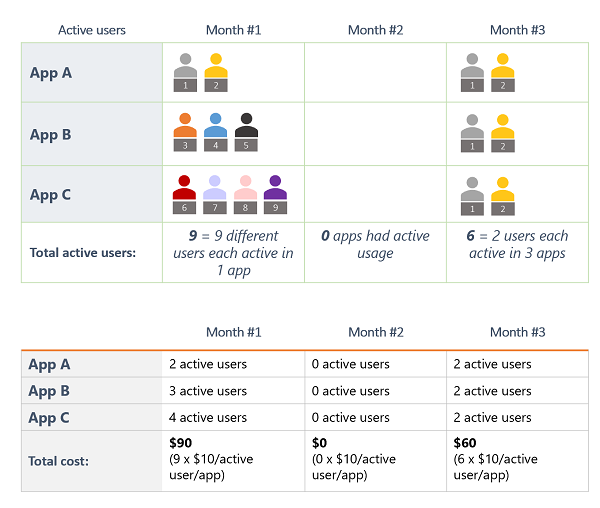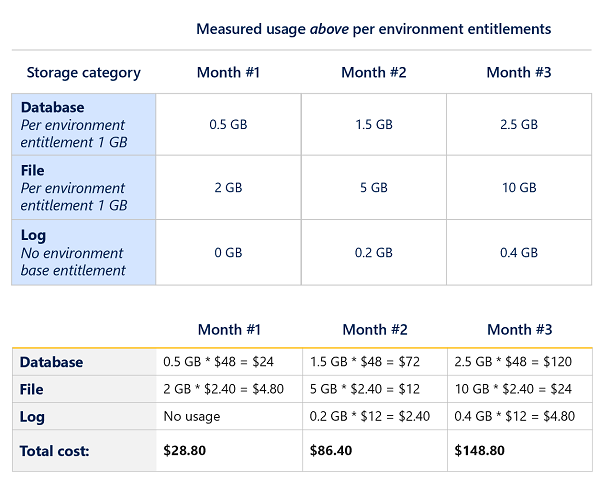Microsoft Power Apps pay-as-you-go (PAYG) pricing model
Microsoft have recently made Power Apps available under a pay-as-you-go (PAYG) model, alongside the traditional “per user”/ “per app” options. The rationale behind Power Apps pay-as-you-go appears to be so Redmond can help organisations digitally transform faster while also reducing wasted software spend.
How it works
To take advantage of the PAYG model, you connect the relevant Power Apps environment to an Azure subscription. You then pay for usage via the following three meters:
1. Power Apps per-app PAYG
Here, you pay when a user runs an app – rather than the existing model of allocating licenses beforehand and seeing them consumed based on apps being shared rather than run.
An active user is, to Microsoft, someone who opens an app and/or a portal at least once a month. The cost is $10 per active user per app per month.
2. Dataverse PAYG
There are three areas of spend here:
- Database storage
- File storage
- Log storage (only used if auditing is turned on)
You get 1GB of database storage and 1GB of log storage included with each linked environment. Use over the free amount is charged at:
- Database – $48 per GB per month
- File – $2.40 per GB per month
- Log – $12 per GB per month
3. Power Platform Requests PAYG
This is the new name for API calls and, as standard, you get 6,000 API calls per user per app per day – Microsoft believe this will be enough for most users. If it isn’t, any additional API calls are charged at $0.00004 per request per day.
Note that the requests example includes both Power Apps and Power Automate.
Cost Management
These new meters will be available within Azure Cost Management, meaning costs can be tracked, budgets can be set, and resources can be tagged.
This has the potential to give organisations much greater insight into Power Apps usage that is currently possible with any ITAM tool.
Conclusion
For some organisations, particularly those where Cloud cost management / FinOps is stronger than ITAM, this new PAYG approach may be the preferred approach – giving better insights and more control. Where it makes sense, organisations can use both the per user and PAYG models simultaneously to best serve the needs of the user base.
Further Reading
Can’t find what you’re looking for?
More from ITAM News & Analysis
-
Software Vendor Insights: What do the numbers tell us about the opportunities for ITAM negotiations?
What software vendor insights can be gained from the latest financial results from Amazon, Google, Broadcom, Salesforce, IBM and SAP? An important part of ITAM is paying close attention to the health of the companies we ... -
Flexera is first SAM tool vendor verified for Oracle E-Business Suite applications
Flexera has announced that it has been verified as the first software asset management (SAM) tool vendor for Oracle E-Business Suite applications. Almost anyone with an Oracle estate will be familiar with the company’s License Management ... -
ITAMantics - March 2024
Welcome to the March 2024 edition of ITAMantics, where George, Rich and Ryan discuss the month’s ITAM news. Up for discussion this month are. Listen to the full ITAMantics podcast above or queue it up from ...



